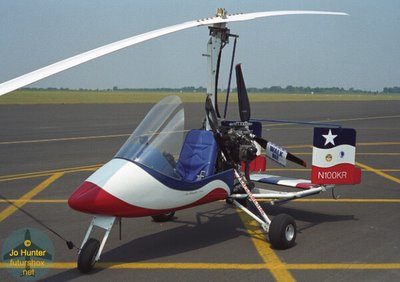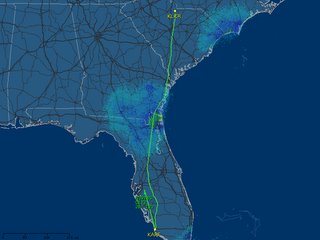It will be interesting to see what the NTSB's determination of the probable cause of this accident is. From the report, it sounds like the pilot did all that he should have, including switching from the left tank to the right tank, with no change in engine performance. We'll keep an eye out for the probable cause determination.NTSB Identification: MIA06LA019
14 CFR Part 91: General Aviation
Accident occurred Tuesday, November 15, 2005 in Heathrow, FL
Aircraft: Piper PA-28R-180, registration: N7453J
Injuries: 2 Minor.
This is preliminary information, subject to change, and may contain errors. Any errors in this report will be corrected when the final report has been completed.
On November 15, 2005, about 2053 eastern standard time, a Piper PA-28R-180, N7453J, registered to Magic Interiors, collided with trees, the roof of a house, then the ground during a forced landing in a residential area near Heathrow, Florida. Visual meteorological conditions prevailed at the time and no flight plan was filed for the 14 CFR Part 91 personal, local flight from Orlando Sanford International Airport (KSFB). The airplane was substantially damaged and the commercial-rated pilot and one passenger sustained minor injuries. The flight originated about 1923, from Orlando Sanford International Airport.
The pilot stated that during his preflight inspection of the airplane he noted the fuel level in the left and right fuel tanks were nearly full, and slightly above the tab, respectively. No contaminants were noted when examining each fuel tank and the fuel strainer. The engine was started with the fuel selector positioned to the right tank, and after engine start, he contacted air traffic control (ATC) and was cleared to taxi to runway 9R. He repositioned the fuel selector to the left tank and performed an engine run-up with no discrepancies reported. He was cleared for takeoff and remained in the traffic pattern for runway 9R where he performed 3 or 4 touch-and-go landings. After the last landing he exited the traffic pattern to the west and proceeded to Leesburg Regional Airport where he performed a full-stop landing on runway 31. He taxied back to runway 31, departed, and climbed to 1,000 feet. He exited the traffic pattern to the east and climbed to 2,000 feet where he reduced the throttle control to 23 inches manifold pressure and the propeller to 2,400 rpm. He also leaned the fuel/air ratio, and proceeded towards KSFB. When the flight was 9.8 miles from KSFB and near Orlando Class B airspace, he established contact with KSFB ATCT. The controller advised him to contact them when the flight was 3 miles away but the controller contacted him before then and advised of nearby traffic. He descended to 1,500 feet and approximately 1 minute later, the engine went to idle and was operating rough but did not quit. He immediately looked at the oil pressure and temperature gauges and noted both indications were in the green arc. He did not recall looking at the tachometer or the fuel flow gauge at the time of the loss of engine power.
The pilot further stated he could not recall the sequence but he "worked" the throttle control which only momentarily corrected the loss of engine power. The engine did hesitate/sputter each time he increased the throttle control. He placed the mixture control to full rich, and verified the auxiliary fuel pump was in the "on" position, and the fuel selector was on the left tank position. The fuel pump and fuel selector had been unchanged from the moment of takeoff at KSFB. He repositioned the fuel selector to the right tank which had no affect, and verified the ignition switch was in the "both" position; he did not check the magnetos. He trimmed the airplane to maintain 80 mph, and looked for a place to land. He saw I-4, but knew because of his altitude that was not an option. At 500 feet he observed lights and saw a small road in a community that was located to his left. He reported that the landing gear extended automatically which occurred because of a decrease in engine rpm, and headed towards the road. He was committed to a landing on the road and began a turn to line up parallel. Looking to the side of the airplane as he turned, he saw a tree dead ahead covered by the darkness. He banked to avoid the tree, but knew impact with the tree would occur. The airplane impacted trees, he closed his eyes, and could not recall the ground impact. He and the passenger unbelted their seatbelts, and exited the airplane; he experienced no difficulty exiting the airplane.
Preliminary examination of the accident site by an FAA airworthiness inspector revealed both wings were separated at the wing root; the right wing remained suspended in a tree. Fuel leakage was noted from the left fuel tank which was on the ground. The airplane was recovered for further examination.
The local paper's article on the accident provides some additional details about the crash.




